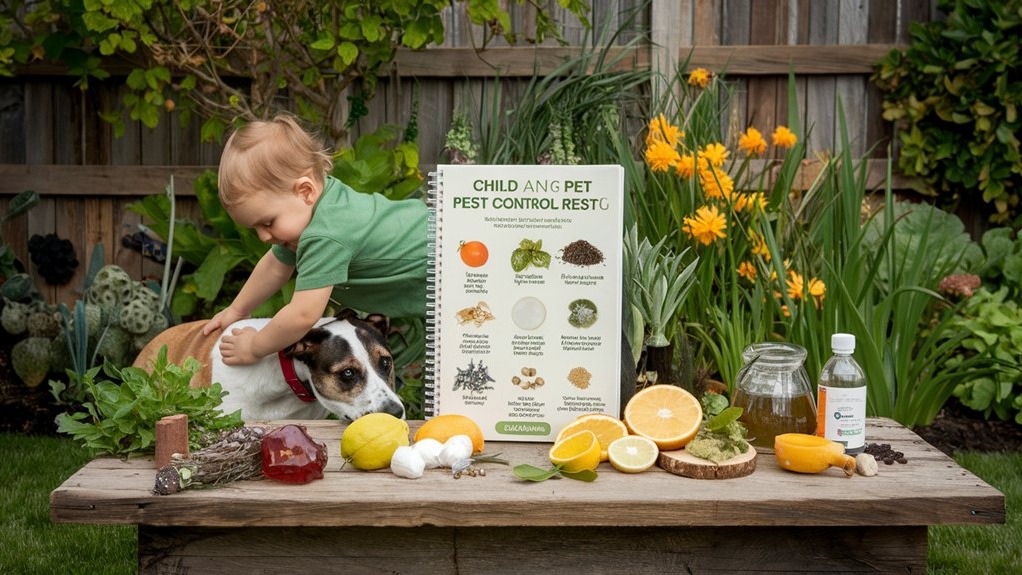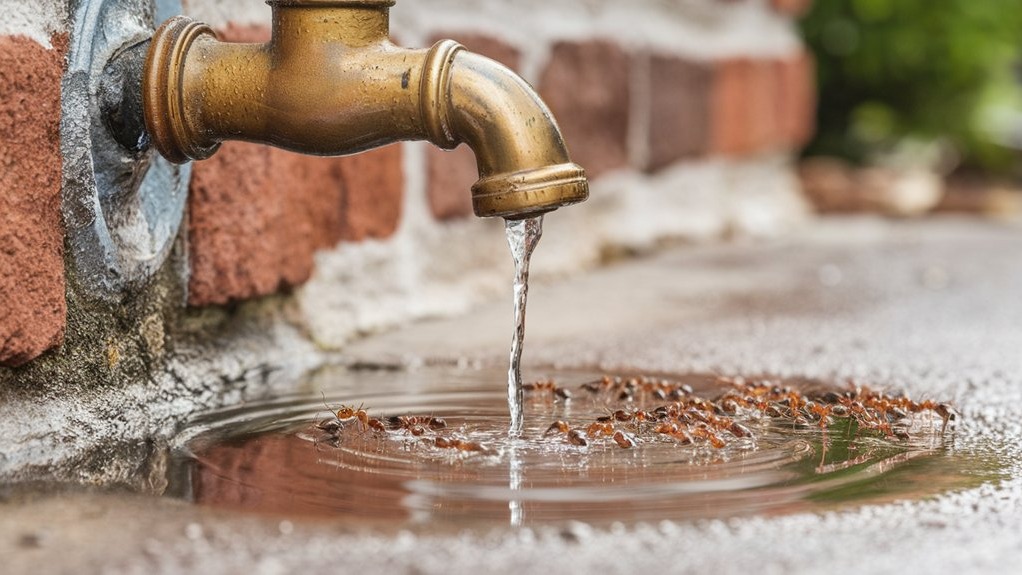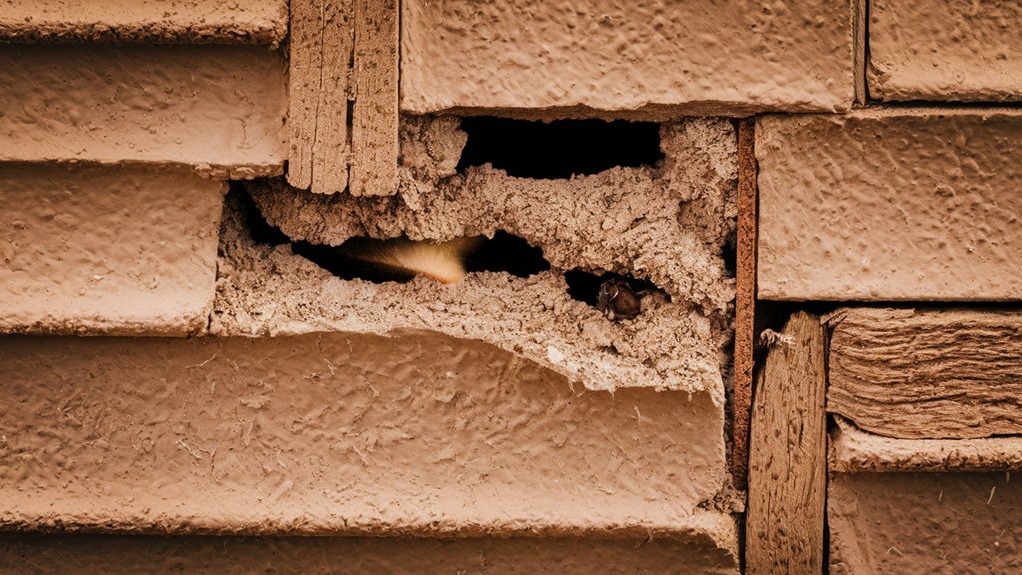Integrated Pest Management (IPM) offers sustainable and cost-effective solutions to controlling pests in your modern home. It emphasizes prevention, understanding pest behavior, and using a variety of control methods. Not only does it spare the environment from chemical contamination, but it also saves you from costly repairs due to pest damage. Ready to manage pests in a way that aligns with sustainability goals and maintains your home's integrity? Let's dive deeper into this ultimate guide on IPM.
Key Takeaways
Integrated Pest Management (IPM) employs prevention, monitoring, and diverse control methods to manage pests sustainably.
IPM offers environmental benefits like reducing chemical contamination and enhancing biodiversity, contributing to long-term resource conservation.
Common IPM techniques include sealing cracks, using biological control agents, and adjusting irrigation and planting times.
Implementing IPM in homes involves sealing cracks, monitoring high-risk areas, employing non-chemical interventions, and maintaining sanitation.
Safety measures in IPM include adhering to manufacturer's protocols, wearing protective clothing, and conducting regular inspections for early pest detection.
Understanding the Core Principles of Integrated Pest Management
If you're looking to effectively manage pests, understanding the core principles of integrated pest management is key.
Start with prevention, making your space less inviting to pests. This involves sanitation, proper plant health, and creating physical barriers against infestations.
You'll also want to regularly monitor your space, using tools to detect early infestations and correctly identify pests.
You need to understand pest behavior, distinguishing between true threats and incidental pests.
Incorporating various control methods into your strategy is crucial for efficient pest management. This could involve cultural methods like crop rotation, mechanical methods such as handpicking, or even biological methods involving beneficial insects or parasites. Remember, chemical controls should only be your last resort to prevent harm to the environment and beneficial insects control methods.
It's also important to establish economic and action thresholds, determining when pest damage justifies control costs.
Consider a tolerance-based model to maintain ecological balance and avoid over-treatment.
Finally, guarantee continuous evaluation and adaptation of your strategy for ideal results.
Environmental Benefits of Implementing IPM Techniques
While understanding the core principles of integrated pest management (IPM) can equip you to effectively control pests, it's equally important to grasp the broad environmental advantages of using these techniques.
By reducing chemical contamination, IPM preserves soil health and minimizes toxic runoff, supporting cleaner food and water sources. Additionally, with its emphasis on natural elements and biodiversity, it plays a vital role in environmental stewardship and the conservation of our natural resources.
IPM safeguards soil health, reduces toxic runoff, and promotes safer food and water by limiting chemical contamination.
IPM also enhances pest biodiversity and ecosystem stability, protecting beneficial species like pollinators while keeping pest populations manageable. Techniques such as crop rotation and biological controls foster balanced, resilient ecosystems.
Additionally, IPM helps mitigate pesticide resistance and reduce pollution, contributing to climate resilience.
Fundamentally, adopting IPM doesn't just deal with pests—it's also a step towards sustainable living.
Economic Advantages of IPM for Homeowners
Ever wonder how much you could save by implementing integrated pest management (IPM) in your home? By deploying cost-effective solutions and pest prevention strategies, IPM can offer significant economic advantages.
Yes, initial setup costs may exist, but these are offset by long-term savings. You'll reduce the need for recurring treatments and chemical pesticides, saving you more over time.
Plus, preventing infestations minimizes costly repairs from structural damage. And let's not forget the savings from avoiding pest-related crop losses in your garden.
IPM also prevents the development of pesticide resistance in pests, avoiding the expenses of repeated failed treatments. Additionally, lower pesticide exposure means fewer medical costs. Importantly, IPM aligns with global sustainability goals, making it an investment not just for your home, but for the planet too.
Exploring Common Methods and Techniques of IPM
Diving into the world of integrated pest management (IPM), you'll come across a wide array of methods and techniques designed to keep your home and garden pest-free. IPM involves understanding the pest lifecycle and making habitat modifications to prevent infestations. Here are some common techniques:
Prevention |
Seal cracks, manage waste, install barriers |
|---|---|
Monitoring |
Use traps, scout fields, maintain records |
Biological Control |
Introduce predators, use microbial insecticides |
Mechanical Intervention |
Remove pests manually, apply heat treatments |
Cultural Control |
Adjust irrigation, time planting, practice pruning |
Additionally, the use of resistant varieties of plants in your garden can serve as an effective method of deterrence, embodying the principles of IPM by reducing the need for chemical interventions. This approach of using resistant varieties is a testament to the versatility and thoughtfulness of IPM strategies.
The Critical Role of Chemical Controls in IPM
Despite the variety of techniques in integrated pest management, chemical controls play an essential role when other methods fall short. They're deployed when pests exceed economic or ecological thresholds, guaranteeing you only use chemicals when absolutely necessary. Over 80% of IPM programs use these chemical intervention strategies as a last resort. They opt for targeted application methods, like spot treatments and precision technologies, to reduce chemical use and protect beneficial insects. New innovations, such as biopesticides and RNA-interference pesticides, are less toxic and more selective. However, a significant part of these strategies is pesticide resistance management, like rotating chemicals and pairing with biological controls, to delay resistance and maintain long-term effectiveness. This approach helps mitigate the risk of pesticide resistance among pest populations, a common challenge faced with purely chemical pest management methods.
Strategies for Implementing IPM in Modern Homes
While it may seem intimidating, implementing integrated pest management (IPM) strategies in a modern home is a process that can be broken down into clear practical steps.
Start by sealing cracks and gaps to block pest access. Regularly monitor high-risk areas like kitchens and attics, and establish tolerance thresholds for different pests. Non-chemical interventions like vacuuming and mechanical traps can be effective control methods.
Adopting proper sanitation strategies also plays a significant role. Consider attending educational workshops or involve your community to learn more about IPM. With an integrated approach, understanding how health factors work together can enhance the effectiveness of your pest management interventions (integrated approach).
Finally, keep track of your interventions, reassess your strategies and adapt as needed. Remember, effective IPM is a continuous process, not a one-time solution.
Biological Controls in IPM: Effective and Eco-friendly Solutions
Integrating biological controls into your IPM plan offers effective, eco-friendly solutions. By using biological agents such as predators, parasitoids, and pathogens, you can work with sustainable practices that aid in maintaining the ecological balance in your home. One such practice includes the use of exotic natural enemies, a method known as classical biological control, which has proven effective in managing pest populations.
These agents are essential to understanding pest dynamics and implementing control strategies. For instance, lady beetles, a predator, can drastically reduce pest populations, while Baculoviruses, a pathogen, can infect and kill pests like moth larvae. Each agent's effectiveness varies, but overall they contribute to significant pest suppression.
Additionally, methods like habitat enhancement can boost biodiversity benefits, helping maintain the pest life cycles in check. Remember, the key to successful biological control is understanding your pest's life cycle, ensuring the right biological controls are in place at the right time.
Mechanical and Cultural Practices: Non-chemical IPM Approaches
Moving on to mechanical and cultural practices, these non-chemical IPM approaches offer efficient solutions to pest problems without harming the environment.
They include a variety of mechanical methods and cultural techniques that can be easily applied in your home.
Mechanical Methods: There's a wide range of options here. You can use physical barriers such as screens or nets, traps like light or sticky ones, or even resort to manual removal of pests.
Cultural Techniques: These involve subtle changes in your regular practices. Opt for resistant plant varieties, rotate crops in your garden, and maintain sanitation by removing infested plants. Implementing these cultural techniques is an application of the IPM plan that evaluates pest infestations before implementing control tactics.
Habitat Modification: Finally, make your premises less inviting to pests. Clear debris, manage your irrigation, and consider companion planting.
Utilizing Botanical Repellents for Safe Pest Deterrence
You've got a variety of botanical repellents at your disposal, each with unique properties to deter pests. By understanding correct application techniques, you can guarantee these natural repellents are used safely and effectively. Let's examine some common botanicals like Neem cake, Citrus sinensis essential oil, and extracts from Azadirachta indica, and how to maximize their pest-deterrent potential. Botanicals are not only effective but also eco-friendly, posing minimal risk to the environment unlike synthetic pesticides.
Exploring Common Botanical Repellents
While it might seem challenging to find a safe and effective method of pest control, botanical repellents offer a solution that's not only natural but also aligns perfectly with the Environmental Protection Agency's Integrated Pest Management principles.
Consider these three powerful botanical repellents:
Neem oil, which disrupts insect hormone systems, targeting pests like aphids and spider mites.
Marigolds, which not only beautify your garden but also deter pests thanks to their limonene and alpha-terpineol compounds.
Citronella, a well-known mosquito deterrent, though its efficacy can vary. Also, citronella grass is especially effective when planted around outdoor spaces, enhancing garden parties and patio experiences while keeping mosquitos at bay.
These options build pest resistance in your organic garden without attracting unwanted pests. Essential oils and botanical mixtures like these provide sustainable and effective solutions for modern homes. Thus, including plants like citronella grass in your home garden can enhance your outdoor experience while offering natural pest control.
Application Techniques for Safety
To effectively utilize botanical repellents for pest deterrence, it's essential that you follow safe application techniques.
Always adhere to the manufacturer's dilution protocols and wear safety equipment, such as nitrile gloves and N95 masks, especially when handling potent botanicals like nicotine or rotenone. Protective clothing, like gloves, masks, and long-sleeved shirts, should be worn to avoid skin contact with raw extracts.
Remember to store undiluted essential oils in childproof containers away from heat sources. When spraying, direct to the undersides of leaves and stems to minimize drift onto non-target plants. Furthermore, it's advisable to test these homemade pesticides on a few plants first to ensure they won't cause damage (Standard Procedures).
Post-application, thoroughly wash your equipment to prevent residue buildup. Always dispose of leftovers responsibly, incorporating them into the soil rather than draining to prevent aquatic toxicity.
Maximizing Effectiveness of Botanicals
When it comes to maximizing the effectiveness of botanicals for pest deterrence, it's crucial to know which plants to use and how to use them.
Here's a simple guide:
Choose the right plants: Rosemary, lemon eucalyptus, and neem are examples of plants that can deter pests effectively due to their botanical synergy. They disrupt pest biology, providing protection against mosquitoes and disrupting insect growth cycles.
Optimize concentrations: Higher concentrations of botanical extracts usually provide better protection. For example, a 17% rosemary extract can offer up to an hour longer protection than a 10.1% concentration.
Integrate with IPM strategies: Combine botanical deterrents with other pest management strategies. For instance, intercropping with basil can reduce aphid populations considerably. Additionally, it's important to note that botanical insecticides should not replace synthetic products but rather complement integrated pest-management programs, maintaining a balanced approach in pest control (botanical insecticides and synthetic products).
The Importance of Regular Inspections and Cleanliness in Successful IPM Implementation
Ensuring regular inspections and maintaining cleanliness are essential for successful Integrated Pest Management (IPM). You must set an inspection frequency, ideally weekly, to detect pests early and prevent population growth beyond control thresholds.
Using tools like glue traps and visual checks, you can locate hidden pests and their breeding sites. By maintaining cleanliness protocols, you deny pests food, shelter, and breeding grounds. Immediate cleaning of spills, management of garbage, and regular cleaning of drains and equipment are key.
Seal cracks, fix leaks, weatherproof entry points, and use HEPA vacuuming to eliminate pests and debris. Remember, regular inspections combined with cleanliness not only control pests but also save costs and maintain your property's aesthetic appeal. Also, it's worth noting that regular pest inspections are crucial in the food industry to avoid contamination and health risks.
Frequently Asked Questions
What Training or Certifications Are Needed to Professionally Practice IPM?
To professionally practice integrated pest management (IPM), you'll need specific training or certifications.
These can range from a Certified IPM Technician credential to academic programs offered by universities like Colorado State or Rutgers.
There's also professional development and continuing education courses, including Green Shield's IPM training.
Even the military offers IPM certifications.
The programs you choose should align with your experience level and career goals.
Are There Any Government Incentives or Subsidies for Implementing IPM?
Yes, there are numerous government programs offering funding opportunities for implementing IPM.
For instance, the USDA's NIFA awards grants like the CPPM program. The EPA's PESP and School IPM Grant Program also provide funding.
State-level incentives include California's DPR and CalEPA, Georgia's Department of Agriculture, and Tennessee's USDA-funded IPM program.
There are also various regional and university-led initiatives, as well as specialized and niche grants.
How Does IPM Address Potential Pest Invasions During Different Seasons?
You'll tackle potential pest invasions differently across seasons with Integrated Pest Management (IPM).
By understanding pest behavior, you can strategize effectively. In spring, you'll monitor emerging pests and utilize cultural controls.
Summer strategies include sanitation and biological controls.
In fall, prepare for overwintering pests with exclusion tactics.
Winter requires rigorous monitoring and moisture control.
These seasonal strategies guarantee you're always one step ahead and your home remains pest-free.
Are There DIY Methods for IPM, or Should It Always Involve Professionals?
Sure, you can use DIY strategies for IPM like manual pest removal or homemade repellents.
Remember, an ounce of prevention is worth a pound of cure.
But sometimes, professional services are necessary. They can address severe infestations, persistent pests, or health risks.
Plus, they've advanced tools and expertise to guarantee sustainable solutions.
What Are the Potential Drawbacks or Challenges When Implementing IPM?
Implementing Integrated Pest Management (IPM) can pose a few challenges.
One major hurdle is cost considerations. The initial investment in equipment, training, and infrastructure can be high.
Another issue you may face is pest resistance. Over time, pests can become resistant to the tactics you're using, making them less effective.
As a result, it's essential to continually update your strategies and stay informed about the latest IPM techniques.
Conclusion
Imagine your home as a fortress, valiantly battling against the invasion of pests. Integrated Pest Management (IPM) is your steadfast ally, offering a sustainable, cost-effective defense. From the clever use of biological controls to the strategic use of chemical methods, IPM equips you with a diverse arsenal. Regular inspections and cleanliness keep your defenses strong, while botanical repellents stand guard. Embrace IPM, not just for its practical benefits, but also for the gift of a safer, healthier home.
 Add Row
Add Row  Add
Add 




Write A Comment